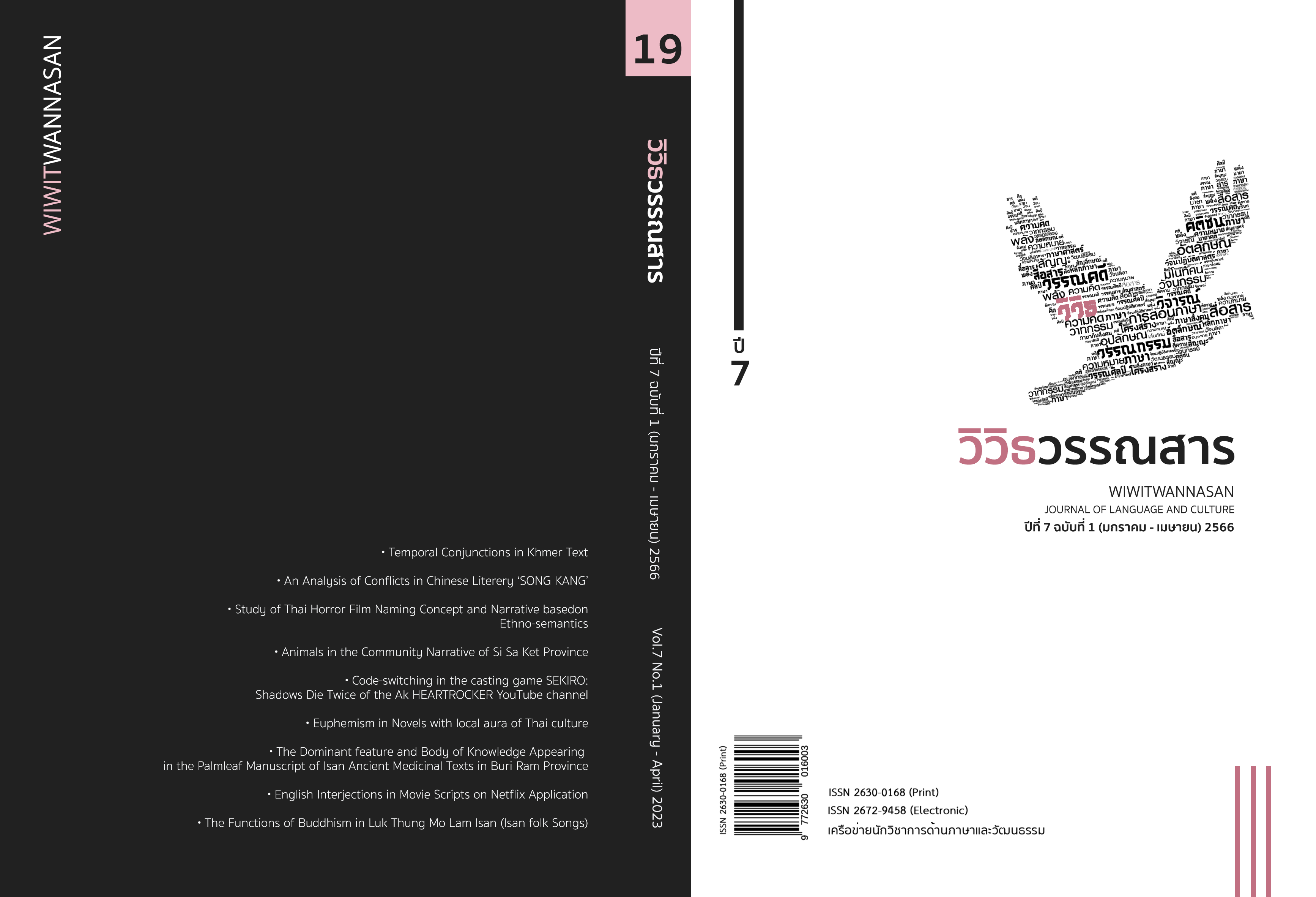Euphemism in Novels with local aura of Thai culture
Main Article Content
Abstract
This article aimed to study the meaning and to semantically classify the euphemism used in local novels of the northern and the central regions. The study was based on the conceptual framework on euphemism’s meaning and semantic classification of Chatchawadee Saralamba (2016) and Kaewjai Charncharoen (1990). The data for analysis included novels with a local aura of Thai cultures which consisted of 2 northern region’s novels, namely Pimpa and Sinehamonta of Lanna, as well as 2 central region’s novels, namely The Karma cage and Life Hunter. The research results can be summarized that the euphemism with denotative meaning in local novels of the northern and central regions could be semantically classified into 11 groups, namely body organs, sexual activities, abnormality of physical appearance, abnormality of intelligence/mental states, conditions/status, occupations, diseases, excretion/excreta, corpses/dead bodies, death, and locations. Furthermore, the euphemism with connotative meaning in local novels of the northern and central regions could be semantically classified into 8 groups, namely, death, body organs, sexual activities, happiness/end of suffering, suffering/acceptance of fate, behaviors/characteristics, senility, and locations.
Article Details

This work is licensed under a Creative Commons Attribution-NonCommercial-NoDerivatives 4.0 International License.
Copyright is that of the journal any reproduction must be permitted by the editor of journal
References
Charncharoen, K. (1990). Euphemism in Thai. (Master’s thesis). Chulalongkorn University, Bangkok, (In Thai)
Kullavanijaya, P. (1984). Science of Language, 4(1), 36-41. (In Thai)
Lamsam, B. (2013). Sinehamonta of Lanna. Nan: Pukhananfahotel. (In Thai)
Saralumba, Ch. (2016). Meaning System, Srinarawat, D. (Ed.), Language and Linguistics (2nd ed.). Bangkok: Thammasat University. (In Thai)
Siriwong, S. (1977). Life Hunter. Bangkok: Bannakarn. (In Thai)
Srisukho, Ch. (1998). Pimpa. Bangkok: Double Nain. (In Thai)
Sriyaphai, W. (2022). Language in Modern Society and Culture, Bangkok: The Book plus. (In Thai)
Tiangtam, N. (2017). The Karma cage. Bangkok: Saengdao. (In Thai)
Vongvipanond, P. (1983). Unit13 Meaning; Thai Text book3 Unit7-15, pp.287-368.
Suwanthada, N. (Ed.), Sukhothai Thammathirat Open University, Nonthaburi. (In Thai)


